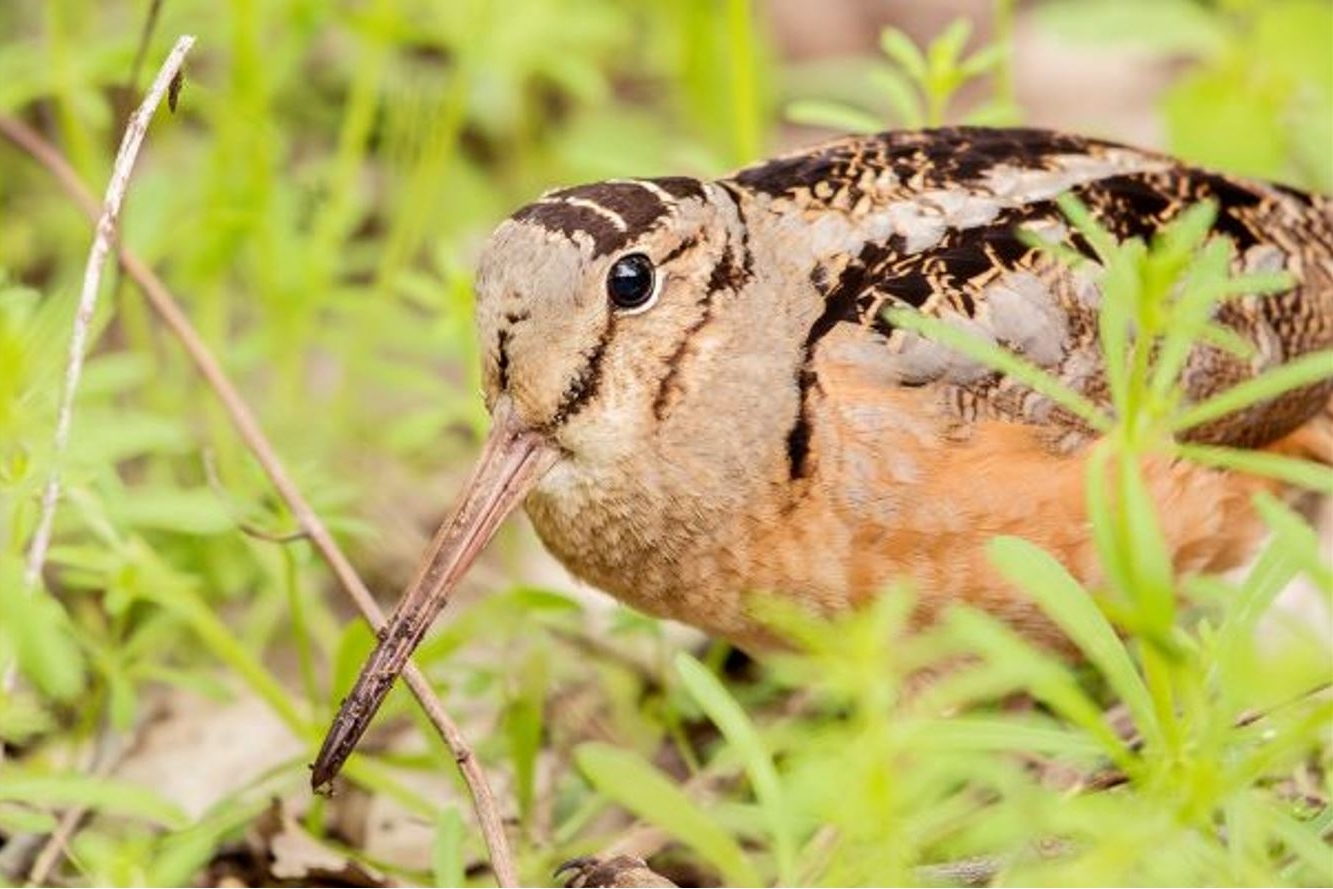By Brian Cunningham
Timber Doodle. Labrador Twister. Mud Snipe. Bog Sucker.
No matter what you call it, the American Woodcock is such an anomaly in the bird world. But, they are so much fun to find, listen to, and watch during their springtime aerial sky dance.
Think of a shorebird that lives in the woods. Basically, it looks like a small, brown-camouflaged football with a long beak. They forage in wet woodlands and bogs, eating lots of earthworms. In fact, they can eat their weight in worms each day! Since they forage with their face in the mud, their eyes are further back on their head than most shorebirds, so they can watch the sky as well as laterally for predators.
But most people pay attention to them for their time on what I like to call the “peenting porch.” This is a patch of ground from which the males are trying to attract a female for mating. So how does one go about finding a peenting porch?
Head out at dusk and listen for the diagnostic “peent” of the male. They often like open ground with no overhead cover while performing their sky dance. Although, I have found them dancing in groves of thick honeysuckle that was ten feet tall. Adaptable little buggers. The males take to flight with a low-angled trajectory and do a big spiral or two about a half-acre wide as they climb high into the sky with a twittering, whistly flight reaching as high as 350 feet. While watching for ladies who might be paying attention, they zig-zag back to their peenting porch descending with slightly-staccato whistle notes that accelerate as they descend. They fall silent right before landing back on the peenting porch. You know they are landed when you hear, “peent.”
Peents can be heard, on a quiet night, from a tenth of a mile away. When really close to a peenting male, listen for a nearly imperceptible “tookoo” immediately preceding the peent. I’m talking 10 yards or less. Now, that is exciting!
How do you get close to a courting male? Listen and try to pinpoint his peenting porch. Note that he turns in circles while peenting; making him sound closer or farther away, even though he is standing in one spot. Once you have a basic direction, choose a smooth, quiet path and prepare to slowly stalk to the porch. When the bird takes flight, walk a short way and then wait. Be sure to stop before he hits the apex of the sky dance. He’ll descend and land (hopefully) on his peenting porch. “Rinse and repeat,” as they say, until within 10 yards of the porch. Use binoculars to try and spy him. For a better view, try shining a flashlight on him while he is peenting. Some birds will tolerate this; others will not. Just like people, every bird is different.
If you are really lucky, you’ll get to see a female approach the peenting porch. You’ll know it is a female (as they are monomorphic; a.k.a. look the same), if the male approaches, throws his wings vertically into the air, and silently struts around in front of her like a flamenco dancer. Now that is cool!
As you get close to the peenting porch, note that upon take-off and landing, the male may fly literally right over your head. So be on the lookout, because it is exciting to be buzzed by a woodcock.
Want to find a woodcock peenting porch? Join a woodcock walk in the area. Check out eBird for woodcock sighting locations. Consider a wetland or moist woodlot. Get out and explore. It may surprise you that some very accessible locations have peenting porches. American Woodcocks will be dancing from February to May, with March & April being prime time in Central Indiana.
Good luck and happy porch hunting.
American Woodcock photo courtesy of Amy Hodson.

